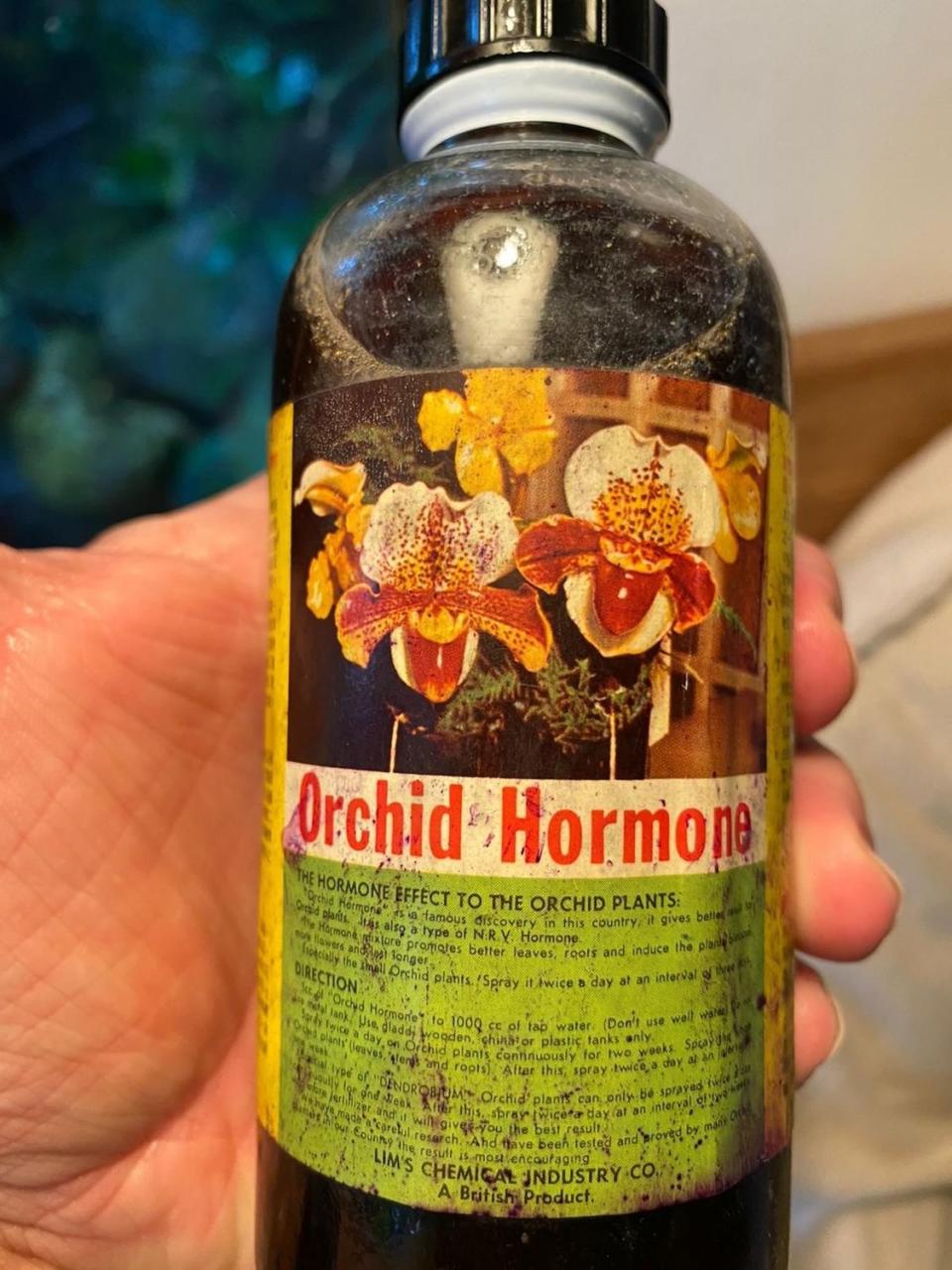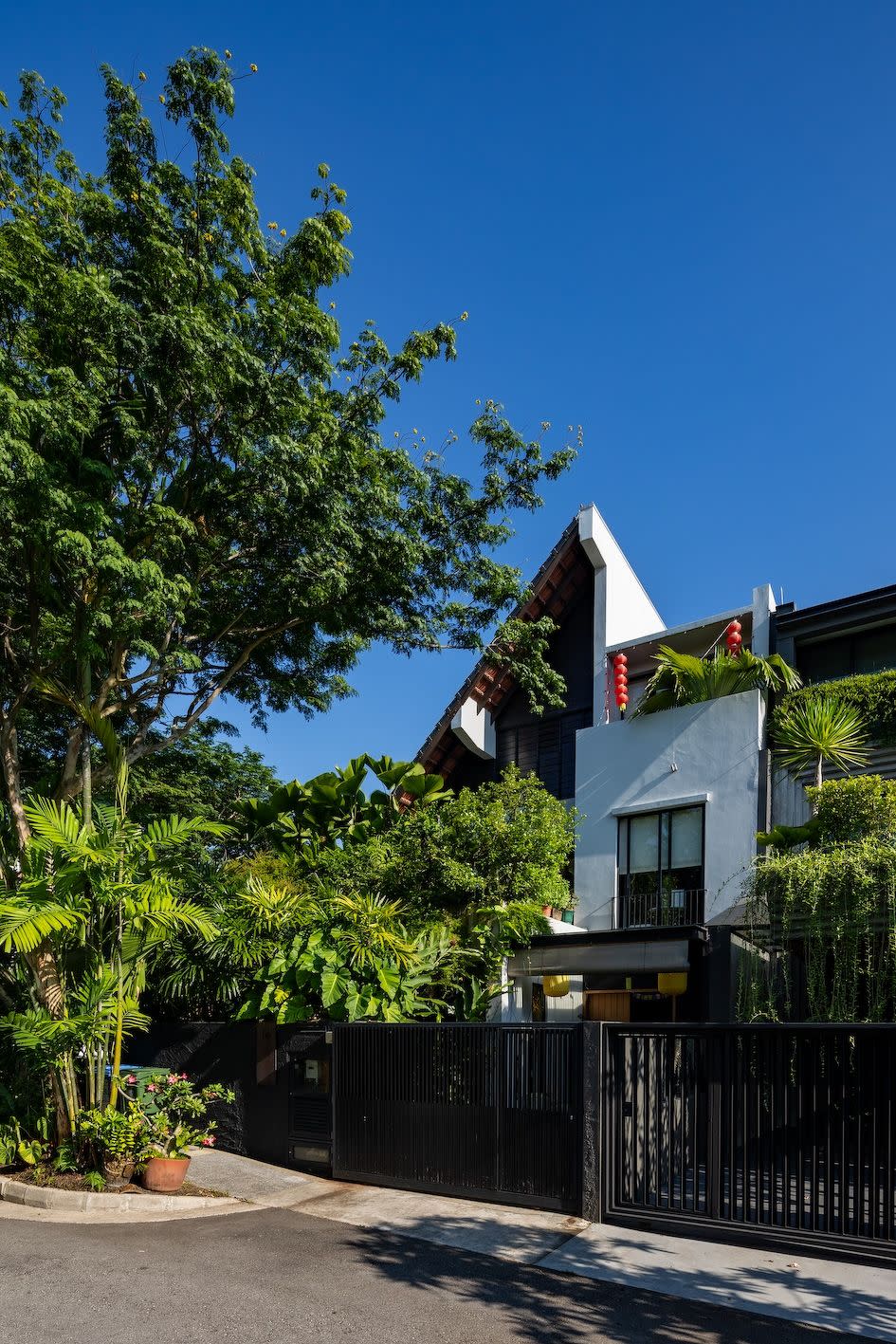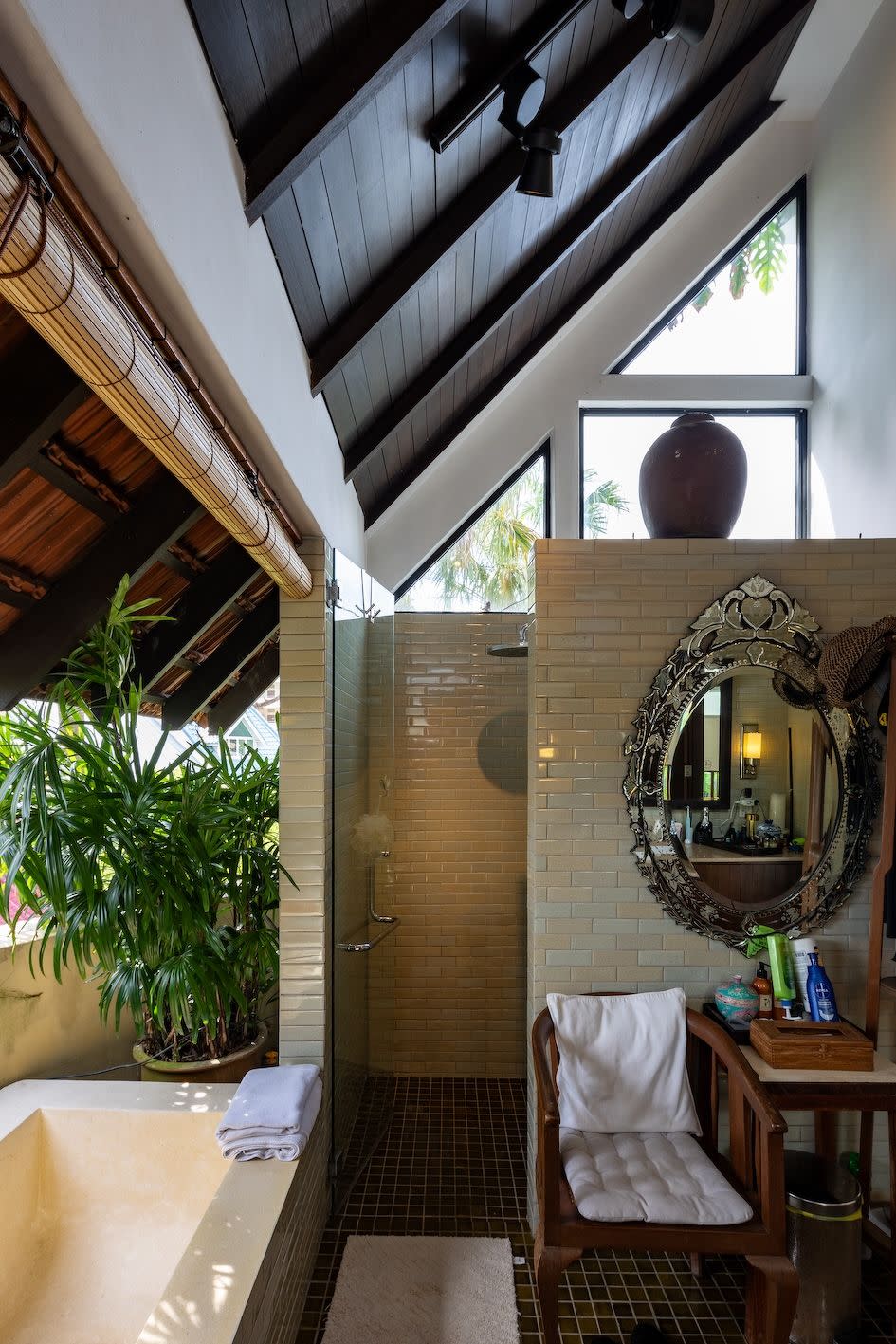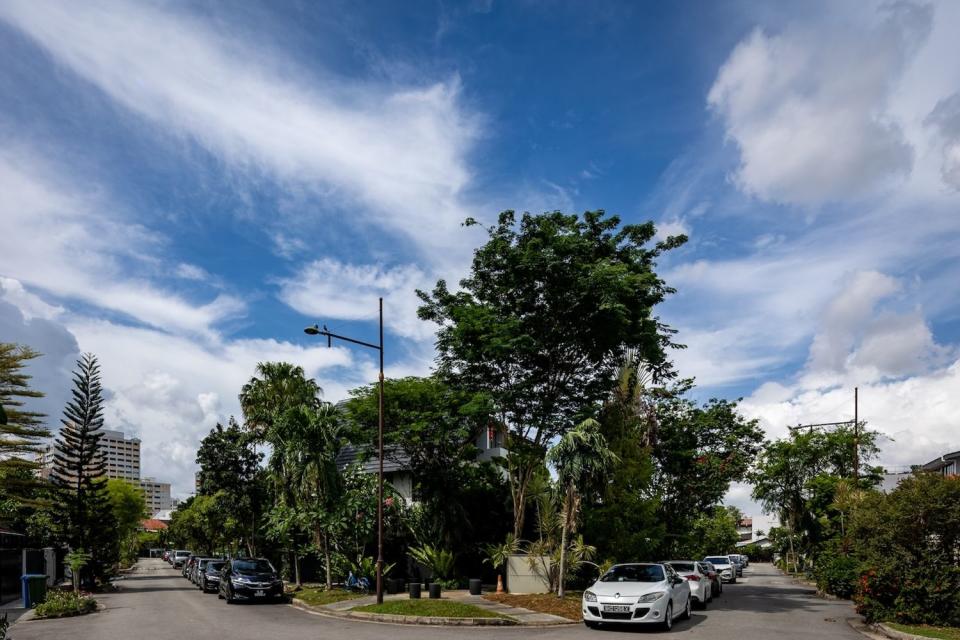Tech professional, self-taught landscape designer and horticulturist
Singaporean Kenneth Lim has held a smorgasbord of high-level jobs in companies from Microsoft to Salesforce, SAP and Trend Micro in a career spanning 27 years.
For the computing and software graduate, gardening is his primary mechanism to destress, away from the fast-paced, always-on tech world. “Gardening started as a hobby, and it has always been an escape for me,” he says.
The interest is one that has been passed down through generations. His maternal grandfather, Ng Aik Huan, was an orchid enthusiast with a special interest in the cattleya variety, which he grew in the garden of his Good Class Bungalow (GCB) on Nassim Road.
Read also: FoundOnEdgeProp: Freehold landed property in District 15 below $5 million
A prominent businessman and philanthropist, Ng co-founded Asia Insurance Co; he also revamped Thong Chai Medical Institution, as he believed Chinese medicine should be included in today’s medical research. With Tan Kah Kee, a fellow businessman and philanthropist, Ng raised money to build Nanyang University.

Lee Kuan Yew, Singapore’s first Prime Minister (centre) and Ng Aik Huan (second from right), Lim’s maternal grandfather (Photo: National Archive)
Lim’s father, meanwhile, worked for the family’s rubber plantation business in Johor. A chemist and a self-taught horticulturist, Lim Seng Cheok’s role was to improve the quality of the rubber produced, as well as the lifespan of the rubber trees.
He invested time and energy in hybridisation and orchid hormones, which he discovered triggered the plants to flower. “As a hobbyist, he loved orchids,” says his son. “Our old house in Katong had a large garden, and he had a section with trellises of orchids.”
The elder Lim later formed Lim’s Chemicals, selling orchid hormones, and even applied the root hormone concept to rubber plants. In hybridisation, his interest was in dendrobium, an ornamental variety of orchids that is now ubiquitous. He was also an active member of the Nanyang Orchid Association in the 70s and 80s, organising and participating in orchid competitions for hobbyists and growers.
With such influences from both his father and grandfather, it’s unsurprising that Lim became interested in plants from “about five or six years old”, he reckons. “Growing up in the late 70s, I followed my father around to these orchid competitions, and I loved the colours of the orchids, which came in many different hues.”

Lim’s Chemicals sold orchid hormones (Photo: Keneth Lim)
Meeting a master
When his career took off, Lim found he did not have as much time to spend in the garden as he would have liked. “At the back of my mind, I knew I had to be closer to nature, but because of my work, I couldn’t,” he reflects. “So I found myself in a paradoxical situation.”
In the early 2000s, he frequently travelled to Bali, Indonesia. During one of his visits, he was introduced to landscape architect Michael White, who was also known as Made Wijaya.
Wijaya designed more than 600 gardens before he died in 2016. In Singapore, he was behind the gardens for the Shangri-La Hotel on Orange Grove Road and The Arcadia condo on Arcadia Road. He also designed gardens for luxury hotels and villas in India, Hawaii, Mexico, and Spain. “He popularised the tropical Balinese garden concept of the 80s and 90s,” says Lim.
After the pair met, Wijaya took Lim to view some of his projects in Bali. A number of luxury hotels in the province, such as The Oberoi Bali, Bali Hyatt, Amandari in Ubud, Four Seasons Resort Bali at Jimbaran Bay and Bulgari Resort in Uluwatu, all bear his hallmark.
“That was when it dawned on me that even though they were all man-made, the gardens looked so natural,” says Lim. “That became my motto: creating a controlled environment that is as close to nature as possible. My landscaping skills were refined after that.”

The 2 1⁄2-storey corner terraced house at Jalan Bangsawan, with landscaping designed by Lim (Photo: Samuel Isaac Chua/EdgeProp Singapore)
Redevelop and redesign
In 2006, Lim’s family decided to redevelop their home on Jalan Bangsawan in Opera Estate. They had moved to the corner terraced house in 1997 after finding the paternal grandfather’s 16,000 sq ft mansion on a sprawling land of over 30,000 sq ft on Wareham Road, off Tanjong Katong Road, too big to manage on their own.
Lim saw this as an opportunity to use his newly honed skills as a self-taught landscape designer and horticulturist to redo the garden. He planned the design with his father. However, the latter died before the project was completed. The project was paused so the family could mourn his passing.
When the project resumed, Lim worked closely with architect Weng Fong of Weng Designs. “I wanted every window and every doorway to frame a view of the garden,” he says.

View of the rooftop terrace and jacuzzi (Photo: Samuel Isaac Chua/EdgeProp Singapore)
The 3,700 sq ft, 2 1⁄2-storey corner terraced house sits on a 2,400 sq ft site. It has a spacious living and dining area and five ensuite bedrooms. Lim handpicked many of the furniture pieces in the home. “It’s a very Peranakan home,” he says; several antique furniture pieces are heirlooms from his grandparents and are over 200 years old.
Lim entertains regularly at home as he enjoys cooking, too. For most of his visitors, the piece de resistance is the view of the garden and koi pond from the living room’s full-height glass windows.
On the second level, the en-suite bedroom occupied by Lim’s mother has a private terraced garden where she can exercise and meditate. His private sanctum is on the attic level, which houses a spacious bedroom, workspace, private terraced garden with a jacuzzi pool, and a Balinese-style bathroom with a bathtub overlooking greenery.

Rooftop jacuzzi (Photo: Samuel Isaac Chua/EdgeProp Singapore)
Health impact
Lim is convinced that a garden can have a positive impact on one’s health. “I’m a primary beneficiary of that, because my blood pressure has been in the perfect range since I rebuilt the house and garden. I don’t have a blood sugar problem, even though I’m almost 55 years old,” he elaborates. “My mother is almost 90 years old and has lived in the house for almost 20 years since we rebuilt it; she has no health problems.”
Even when he is working from home, he can focus better, he says. And if he needs a break, he shuts his laptop and walks into the garden. “The proximity to nature can alleviate stress and lower the blood pressure.”
Not long after he completed the redevelopment and landscaping of his home, Lim started getting requests from neighbours and friends to design their gardens, too. He initially did it as a recreational activity, but as requests mounted over time, he formed a company, SyncScape, to take them on.
Over the past 17 years, Lim has designed over 100 gardens for houses across Singapore, from terraced to detached houses, including GCBs. He has designed gardens for at least nine houses in his neighbourhood of Jalan Bangsawan alone and another 15 houses in other parts of the Opera Estate precinct. “All my clients came purely through word of mouth,” he says.

The Balinese-style attic bathroom with a bathtub overlooking greenery (Photo: Samuel Isaac Chua/EdgeProp Singapore)
‘Activity-based design’
Inspired by his mentor Wijaya, Lim has also designed the gardens of over 30 boutique hotels in Bali, such as The White Villa in Ubud, Villa Nini Elly in Canggu, and Villa Devatas on the southwestern coast of Bali.
“I chose to do boutique hotels because they always present an interesting design brief about what they want to achieve,” Lim says. “For instance, if the space is designated as a massage room, you need to create an environment where people can relax. It’s about creating a sensory and visual connection between the indoor and outdoor spaces.”
Over time, the interest of the self-taught landscape designer and horticulturist has expanded into biophilia — the theory that humans are innately and intricately connected with nature. He experimented with the biophilic management of his garden at home, noting that it “has gone through several transformations”.

The attic-level bathroom (Photo: Samuel Isaac Chua/EdgeProp Singapore)
Biophilic design is essential, Lim says, especially in a built-up urban environment like Singapore. “Whether a space is used for relaxation, work or entertainment, it’s important to create vistas within the living environment,” he adds. “It all ties back to the concept of activity-based design.”
Lim works closely with the architect for each project he takes on. It is this exchange of ideas that allows him to create the garden.
“While creating a beautiful garden at home is important, understanding how a space is being used is equally important — whether the space is going to be used as a watering hole, outdoor dining area or a chit-chat corner,” he explains. “With people working from home, it’s also important to see if it’s an area where people will be taking calls — indoors or outdoors.”

The roof terrace directly outside Kenneth Lim's mother's bedroom (Photo: Samuel Isaac Chua/EdgeProp Singapore)
Plants, AI and IoT
While working on his landscaping projects, Lim discovered a big concern that most homeowners and commercial building owners have: how do they maintain the gardens and green spaces and manage the associated costs over the long term?
This is something that he is looking to tackle through the use of artificial intelligence (AI) and the Internet of Things (IoT). A company doing just that is Naturethings, which he joined last year as part of the founding team and head of design.
“We are looking at how we can improve landscape design and maintenance,” he says. “The design and implementation of a garden is just a one-time project. But maintenance is a long journey, especially when dealing with living things. It’s not just about watering the plants. Factors like the acidity or alkalinity of the soil, nutrients, humidity and ambient air temperature are just as important.”

Besides greening the house, the landscaping also acts as a privacy screen (Photo: Samuel Isaac Chua/EdgeProp Singapore)
By attaching sensors to plants, this data can be crunched into actionable advice for plant nurseries. “We are beta-testing with several nurseries right now,” says Lim. He believes Naturethings combines his passion for tech, nature and lifestyle. “Understanding carbon sequestration and environmental health is a need that is not catered for, but it is important for built design.”
Lim is constantly thinking about the next project. He is now exploring permaculture and the farm-to-table concept and is considering moving to Bali to follow that dream. As such, he has put his home in Singapore up for sale.
In the meantime, though, he and his mother will continue to enjoy their home. It remains in “tip-top condition”, he says.
Read more: Greening the neighbourhood — one house at a time
See Also:
Singapore Property for Sale & Rent, Latest Property News, Advanced Analytics Tools
New Launch Condo & Landed Property in Singapore (COMPLETE list & updates)
En Bloc Calculator, Find Out If Your Condo Will Be The Next en-bloc

 Yahoo Finance
Yahoo Finance 